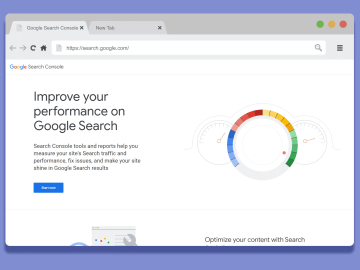Canadian businesses need to step up their game when it comes to social media and SEO. I’ve seen firsthand how combining these two can give companies a real edge online. By integrating techniques with social media strategies and the best SEO services, Canadian businesses can boost their visibility and reach more customers across different platforms.
It’s not just about posting content and hoping for the best. I’ve found that using the right keywords, optimizing profiles, and sharing valuable links can make a big difference. For example, a restaurant in Toronto might use phrases like “best poutine in Toronto” on Facebook to attract diners, while using “restaurant jobs in Toronto” on LinkedIn to find staff.
Keeping up with the latest trends is key and I’m seeing more companies use tools that connect their social media, website, and marketing efforts. This joined-up approach helps create a strong online presence that search engines love. It’s all about making your brand easy to find and engaging to follow across the web.
Key Takeaways
- Mixing SEO and social media boosts online visibility for Canadian businesses
- Using platform-specific keywords and optimized profiles improves search rankings
- Integrated tools help connect social media with other marketing efforts for better results
Understanding SEO and Social Media Fundamentals
SEO and social media work together to boost online visibility. I’ll explain how to use keywords, optimize profiles, and measure engagement to improve your Canadian brand’s digital presence.
The Role of Keywords in SEO
Keywords are the backbone of SEO. I start by doing keyword research to find terms Canadians use to search for my products or services. I focus on a mix of short and long-tail keywords that match search intent. It’s important to use these keywords in my website content, page titles, and meta descriptions.
I also add keywords to my social media posts and profiles. This helps my content show up in social media searches. But I’m careful not to overdo it – natural language works best.
To track my progress, I use tools to check my keyword rankings. This lets me adjust my strategy as needed.
Leveraging Social Media Profiles
My social media profiles are prime real estate for SEO. I make sure to fill out all sections completely. This includes using my target keywords in my bio, about section, and pinned posts.
I add links to my website in my profiles. This creates backlinks, which can boost my site’s authority. I also share my blog posts and other content on social media. This drives traffic to my site and can increase my search rankings.
It’s crucial to keep my profiles active and up-to-date. Regular posts and interactions show search engines that my brand is current and relevant.
Engagement: A Metric of Success
Engagement is key for both SEO and social media success. I track likes, comments, shares, and click-throughs on my posts. High engagement signals to search engines that my content is valuable.
I respond to comments and messages promptly. This builds relationships and encourages more interaction. I also create content that sparks conversation, like polls or questions.
To boost engagement, I post at times when my Canadian audience is most active. I use analytics to find these peak times. I also use hashtags to increase my content’s reach and make it more discoverable.
Enhancing Online Visibility and Traffic
Boosting online visibility and traffic is key for Canadian businesses. I’ll share proven techniques to get your content seen and drive more visitors to your site.
Developing a Content Strategy for Engagement
I create content that speaks to my Canadian audience. I focus on topics they care about, like local events or Canadian culture. I use a mix of posts – photos, videos, and text. This keeps things interesting.
I post often, but not too much. Once or twice a day works well. I time my posts for when my followers are most active. This might be at lunch or after work hours.
I always respond to comments and messages. This builds a community around my brand. People are more likely to engage if they know I’ll reply.
Optimizing Profiles and Content for Search Engines
I make sure my social profiles are complete. I use keywords in my bio and posts. These help search engines understand what I’m about.
I use hashtags smartly. I pick ones that are popular but not overused. I also create my own branded hashtags.
I link to my website from my profiles. This helps search engines connect my social presence to my site.
I use alt text for images. This makes my content more accessible and helps with SEO.
Utilizing Analytics for Improved Performance
I use tools like Google Analytics to track my progress. I look at which posts get the most engagement. I see where my traffic is coming from.
I check my search rankings for key terms. If they drop, I adjust my strategy.
I look at my conversion rates. This tells me if my traffic is turning into customers.
I use A/B testing for my posts. I try different headlines or images to see what works best.
I keep an eye on my bounce rate. If it’s high, I make my content more engaging.
Social Media SEO Tactics
Social media SEO can boost your online presence and drive more traffic to your website. I’ll cover some key tactics to optimize your social content, build quality links, and tailor your approach for different platforms.
Integrating Keywords with Social Content
I use keywords strategically in my social media posts to improve visibility. I include relevant keywords in my profile bios, post captions, and hashtags. On Instagram, I add keywords to my alt text for images. For YouTube videos, I put keywords in titles, descriptions, and tags.
I avoid keyword stuffing, which can make posts sound unnatural. Instead, I weave keywords into my content naturally. I also use long-tail keywords as hashtags to reach niche audiences.
Here are some tips for keyword integration:
- Research popular keywords in my niche
- Use a mix of broad and specific keywords
- Include location-based keywords for local SEO
- Update keywords regularly based on trends
Building Backlinks through Social Platforms
I leverage social media to build quality backlinks to my website. I share my blog posts and other content on social platforms with links back to my site. This drives traffic and signals to search engines that my content is valuable.
I also engage with others in my industry by commenting on their posts and sharing their content. This helps build relationships that can lead to natural link-building opportunities.
Some effective backlink strategies I use:
- Create shareable infographics and videos
- Write guest posts for industry blogs
- Participate in relevant online communities
- Run social media contests that require sharing links
Strategizing for Different Platforms
I tailor my SEO tactics for each social platform. On LinkedIn, I focus on professional keywords and industry terms. For Facebook, I use more conversational language and local keywords.
On Twitter, I make the most of hashtags to expand my reach. I research trending hashtags in my niche and use a mix of popular and niche tags.
For visual platforms like Instagram and Pinterest, I optimize image descriptions and use relevant hashtags. I also create eye-catching graphics with text overlays that include keywords.
I track my performance on each platform and adjust my strategy based on what works best. This helps me maximize my SEO efforts across all my social channels.
Evaluating Success and Adaptive Strategies
I’ve found that tracking results and staying flexible are key to social media SEO success in Canada. Let’s look at how to measure performance and adapt to changes.
Monitoring Engagement Metrics
I keep a close eye on likes, shares, comments, and click-through rates. These numbers tell me how well my content connects with people. I use tools like Google Analytics to track website traffic from social platforms. This helps me see which posts bring the most visitors.
I also look at follower growth and reach. A steady rise in followers shows I’m building an audience. Reach tells me how many people see my posts. If reach drops, I might need to tweak my content strategy.
Conversion rates are crucial too. I track how many social visitors take action on my site, like signing up or buying something. This shows if my social efforts are helping my bottom line.
Adapting to Algorithm Changes
Social media algorithms change often. I stay on top of updates to keep my content visible. When Facebook or Instagram make changes, I adjust my posting times and content types.
I focus on creating high-quality, engaging posts. Algorithms tend to favour content that sparks conversations. I ask questions and encourage comments to boost engagement.
I also vary my content formats. I mix up text, images, and videos to see what works best. If I notice video posts getting more reach, I’ll make more of those.
I keep testing new features on social platforms. When Instagram adds a new story sticker, I try it out. This can help me stay ahead of algorithm shifts and keep my content fresh.





